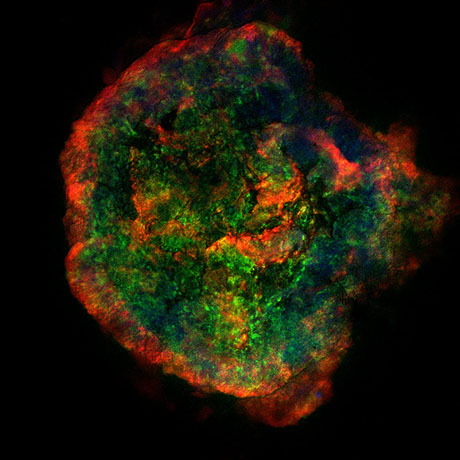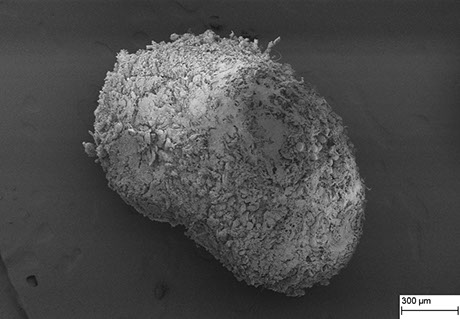Facilities
University of Kansas School of Engineering: Environmental Engineering Wet Laboratory
The Environmental Research and Environmental Instrument Laboratories were renovated in 2007 and comprise 2600 sq. ft. of wet lab, analytical chemistry, microbiology, and fluorescent microscopy workspaces.
Dr. Sturm also oversees two labs (a 450 sq. ft. Greenhouse and a 730 sq. ft. wet lab) in the Measurement, Materials, and Sustainable Environment Center, which was dedicated in the fall of 2012.
In total, these laboratories contain all of the equipment necessary to perform reactor and biological growth experiments. The School of Engineering has a full-time technician staff and machine shop to help design, build, and maintain experimental set-ups.
A list of key research capabilities for this space are:
Key research capabilities:
- Biological Reactor Studies (bench-scale)
- Sequencing Batch Reactors for Wastewater Treatment
- Granular Activated Sludge reactors
- Biofilm reactors and biofilm characterization
- Algal Photobioreactors
- Treatability Studies (microcosms, bench-scale, mesocosms
- Testing of biological treatment capacity at multiple scales
- Biological Analysis
- DNA Extraction and quantification
- Fluorescent microscopy for species identification (FISH)
- Extracellular polymeric substance studies (chemical and microscopic)
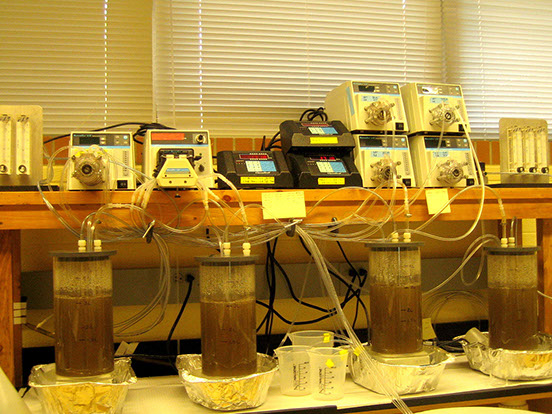

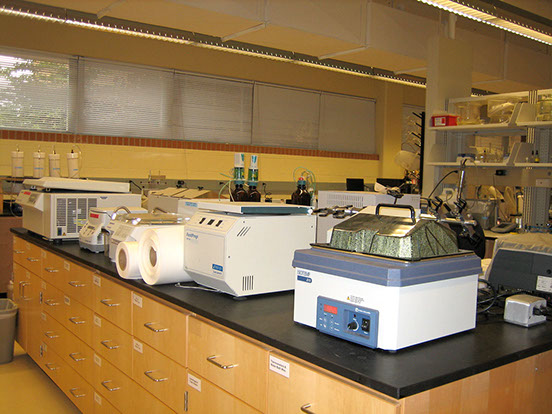
University of Kansas School of Engineering: Environmental Engineering Multi-Use Innovation Laboratory
Located in the Measurement, Materials, and Sustainable Environment Center, The Multi-Use Innovation Lab serves as a space for projects that may ultimately reach the pilot stage, and as an additional facility to carry out alternative fuel panel research that is also the focus within the roof-top greenhouse.
A list of key research capabilities for this space are:
- Greenhouse with shade system, evaporative cooling, and Wadsworth environmental controller
- Two 1100-L raceway ponds with YSI multi-probe monitoring for physical and chemical parameters
- Evodos (Type 2/10) algal centrifuge that is specified to produce biomass with > 20% solids
- Flat panel photobioreactors (15-L) with controlled CO2 injection
- 19-cylinder photobioreactors with controlled CO2 injection
- LICOR light meter
- UV-visible light spectrophotometer
- PARR high-pressure, high-temperature reactor inside a floor-mounted, ventilated enclosure
- Reactor vessels ranging from 30 mL to 450 mL. The smaller vessels are able to operate up to 600º C (with varying ramp rates) and pressures up to 4500 psi, while the larger vessels can operate up to 350º C and 2500 psi.
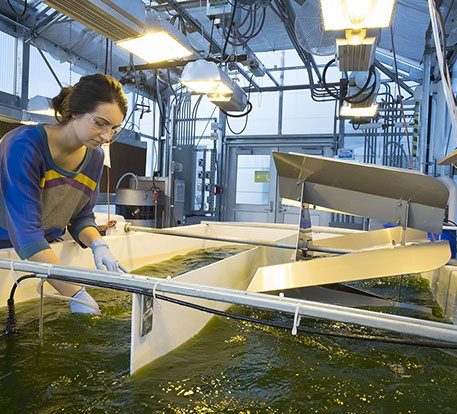
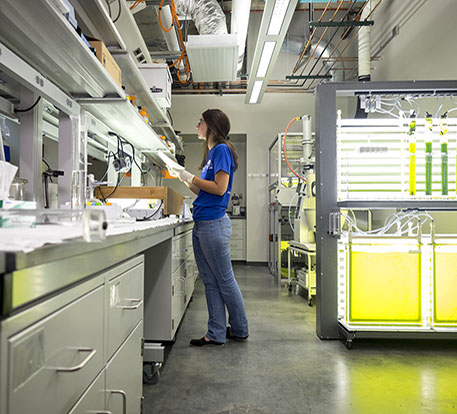
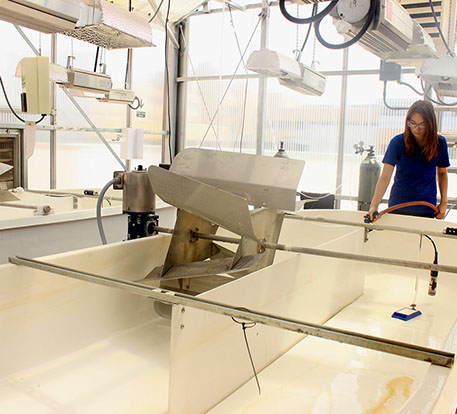
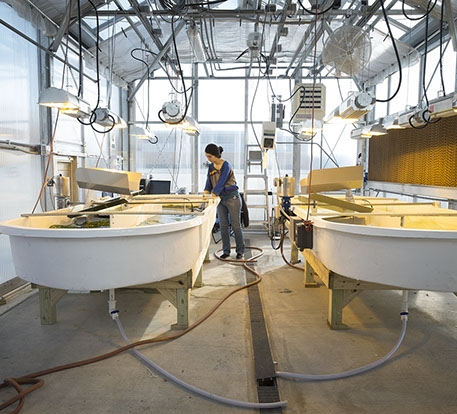
University of Kansas School of Engineering: Environmental Engineering Analytical Instrument Laboratory
The Environmental Engineering Analytical Chemistry Laboratory is located in Learned Hall. The space houses key instrumentation that are used to to carry out chemical and biological analyses
A list of key research capabilities for this space are:
- Chemical Analysis
- UV-Spectrophotometry methods (Shimadzu UV-1650 dual-beam UV/Vis spectrophotometer)
- Gas Chromatography-Mass Spectrometry (Agilent 6890 GC, 5973 MS and Agilent 7890B GC, 5977A MS)
- High-Performance Liquid Chromatography (Agilent liquid chromatograph with UV and a refractive index detector)
- Ion Chromatography (Dionex 2000i ion chromatograph with anion capability)
- Total Organic Carbon and Nitrogen (Tekmar Torch TOC/TN analyzer)
- Metals (Varian AAS 240 atomic absorption spectrometer with both flame and graphite furnace capability)
- CHONS Elemental Analysis (Perkin Elmer CHONS elemental analyzer)
- Clean bench for the preparation of trace-level standards
- Biological Analysis
- DNA extraction and quantification (Qubit, Nanodrop)
- Quantitative PCR (BioRad iCycler)
- Thermocyclers with gradient capability (Eppendorf)
- Gel electrophoresis system
- Gel documentation system (Alpha Innotech Imager)
- -86C freezer and -20C freezer
- Microscopy
- Leica UV epifluorescent microscope equipped with 2x, 10x, 20x, 60x, and 100x objectives
- Cooled-digital camera for imaging
- Image Pro software
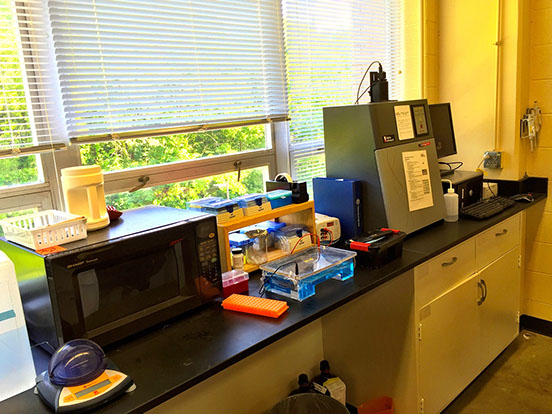
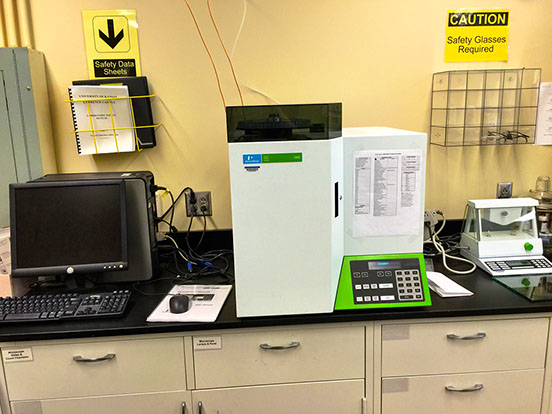
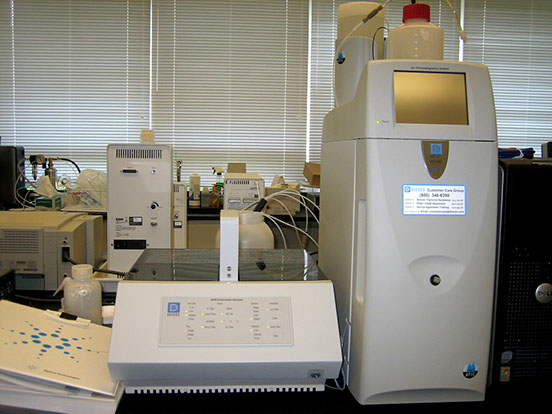
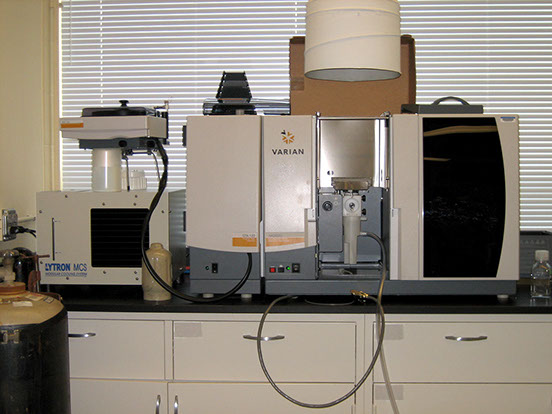
University of Kansas Center for Microbial Metagenomics Community Analysis (CMMCA)
The Center for Metagenomic Microbial Community Analysis (CMMCA) is a multidisciplinary initiative comprising faculty from multiple departments and fields conducting research from genes to ecosystems. The Center was established as an internal investment by the University.
The CMMCA is able to carry out Next Generation Sequencing (NGS) and data analysis with the support of the University of Kansas Genome Sequencing Core (GSC) and the Advanced Computing Facility (ACF).
Check out the Services page for a list of services provided by the CMMCA
The CMMCA is geared to perform provides the following services:
- DNA extraction from environmental samples
- DNA quantification
- Illumina amplicon library prep and Sequencing (HiSeq or MiSeq)
- Bioinformatics analysis of NGS data
- Quantitative PCR
- RNA-Seq
- Fluorescent In-Situ Hybridization (FISH)
For more information please review Services section.
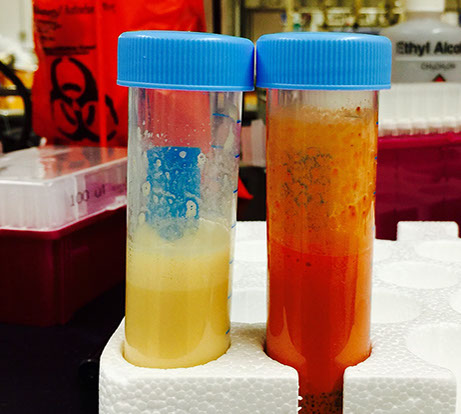
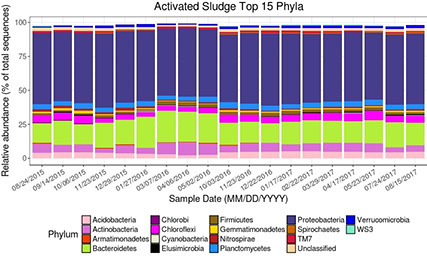
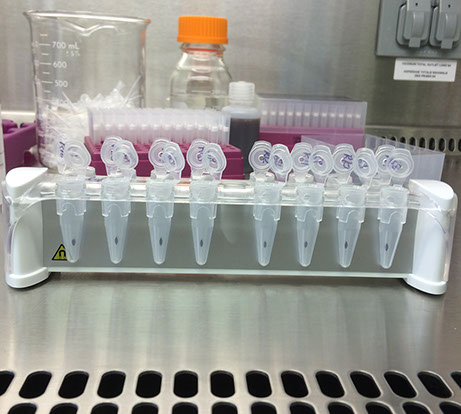
University of Kansas Field Station Nelson Environmental Study Area (NESA)
NESA is located within the larger University of Kansas Field Station & Ecological Reserves (KSR), which totals more than 3,000 acres of habitats, experimental tracts, and support facilities. The University of Kansas Field Station has served a prominent role in ecological, environmental, and toxicological research for more than half a century.
NESA is devoted to experimental ecological studies, including the Kansas Aquatic Mesocosm Program, which includes more than 100 experimental ponds and aquatic enclosures, as well as Frank B. Cross Reservoir, a protected watershed. As the headquarters for the larger ecological reserves, NESA also houses a year-round caretaker residence, a meteorological station, an Aquatic Laboratory, the KSR Headquarters, overnight cabins, a well-equipped shop, maintenance and storage buildings, vehicles, and heavy equipment. The original headquarters building was constructed in 1994 with the aid of an NSF grant. In the last five years, another NSF grant has allowed for expansion of the headquarters, with a 2700 sq. ft. addition, including the 1700 sq. ft. Armitage Education Center. This includes a large classroom/meeting room, two laboratories, a lobby/great room, a full kitchen, offices, and shower and laundry facilities.
In addition to these excellent facilities, three full-time technical and maintenance staff are available at NESA to maintain the greater field station and to aid experimental operations.
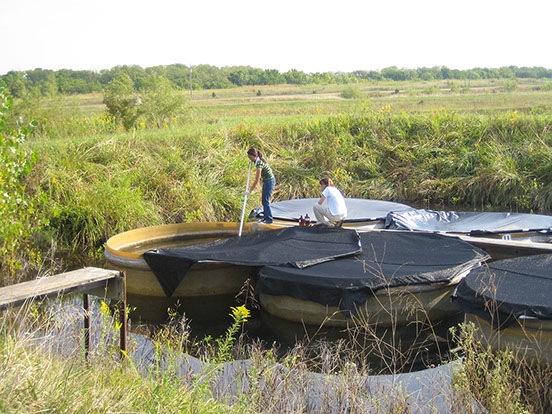
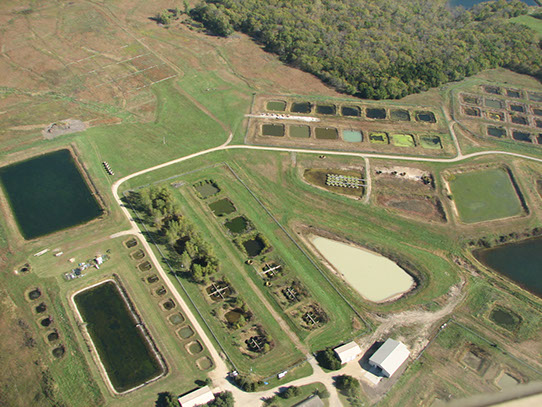
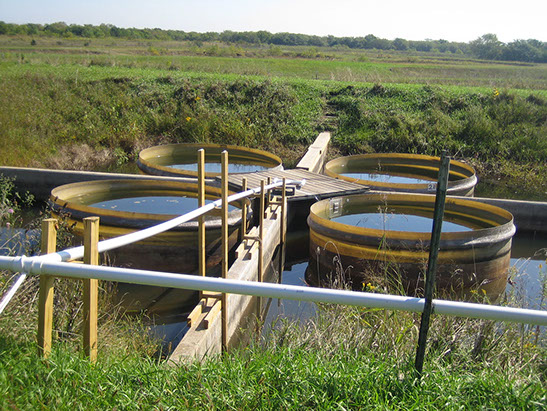
The City of Lawrence Wastewater Treatment Plant
The City of Lawrence wastewater treatment plant has a secondary treatment capacity of 25 million gallons per day (MGD) and an average annual flow rate of 9 MGD.
The plant performs nitrification to meet a daily ammonia limit of 7.5 mg/L, but there is no current discharge limit for total nitrogen and phosphorus.
The City has historically hosted pilot wastewater systems for Dr. Sturm’s research, providing access to wastewater and power to operate the system.
University employees follow all City Utility and OSHA safety requirements while on City property.
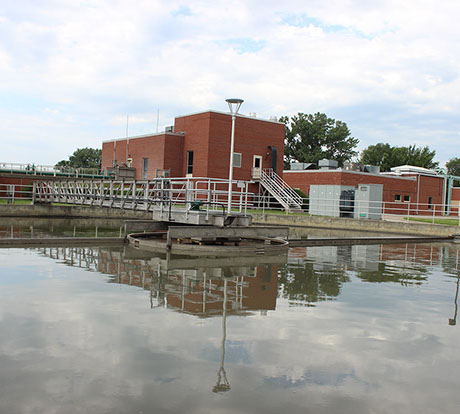
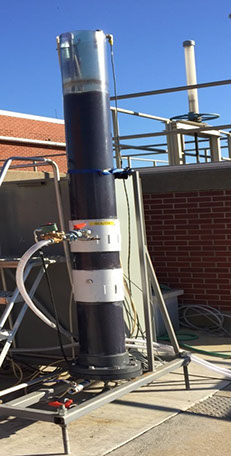
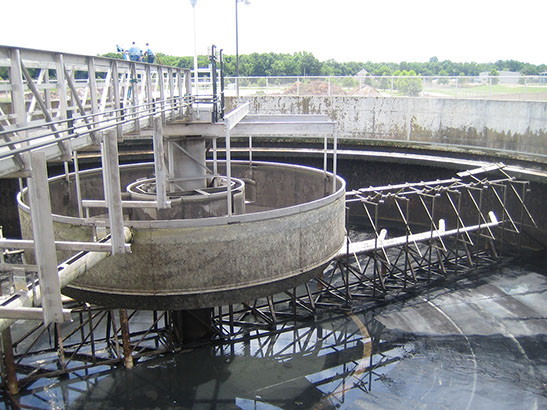
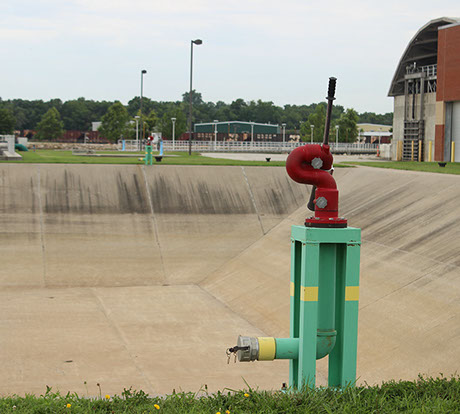
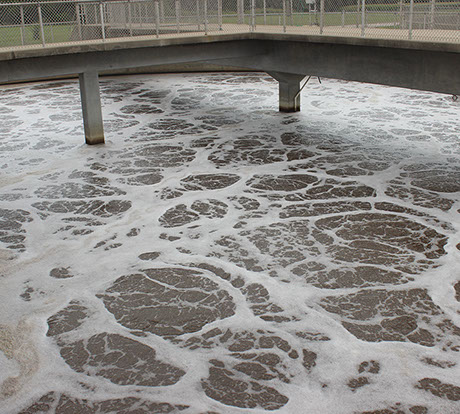
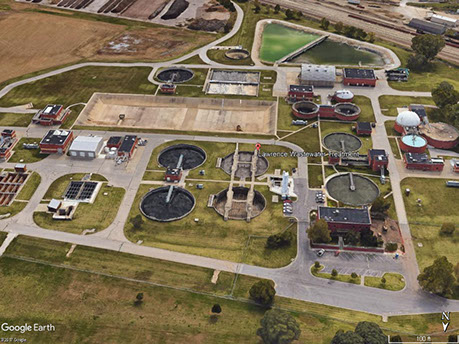
University of Kansas Microscopy and Analytical Imaging Laboratory
The Microscopy & Analytical Imaging Laboratory at the University of Kansas is a common-use service lab maintained under the auspices of the Kansas University Center for Research, Inc. The laboratory recently underwent extensive renovations and has acquired a wide spectrum of analytical imaging devices with very flexible imaging capabilities to address the needs of multiple disciplines including biology, materials sciences, and chemistry.
Within the lab, a wide range of optics, high-speed shutters, and spectral analysis tools are available, permitting flexible configurations of devices for specialized applications including, but not limited to, total internal reflection fluorescence microscopy, spectral confocal microscopy (laser scanning confocal microscopy platform), spinning disk confocal microscopy, measurement of multi-spectral polarization anisotropy, dynamic measurements of fluorescent dipole orientation, fluorescence correlation spectroscopy, and high-speed FRET detection.
The laboratory is also home to a 120keV TEM, a Field Emission SEM equipped with EDS and Cathodoluminescence detection, and a FEI Versa 3D Dual Beam Field Emission SEM for enhanced resolution. The laboratory also houses an Atomic Force Microscopy (AFM) Bioscope attached to an inverted confocal microscope allowing for automated sample scanning from live and fixed specimens, with both phase and fluorescent imaging in the x-y-z planes.
Two flow cytometers are housed in the laboratory providing a full array of Fluorescence Activated Cell Sorting (FACS) and Complex Object Parametric Analyzer and Sorter (COPAS) sorting services. A Typhoon TRIO variable mode imager provides fluorescence, chemiluminescence, and phosphorescence scanning and analysis of gels and microtitre plates.
